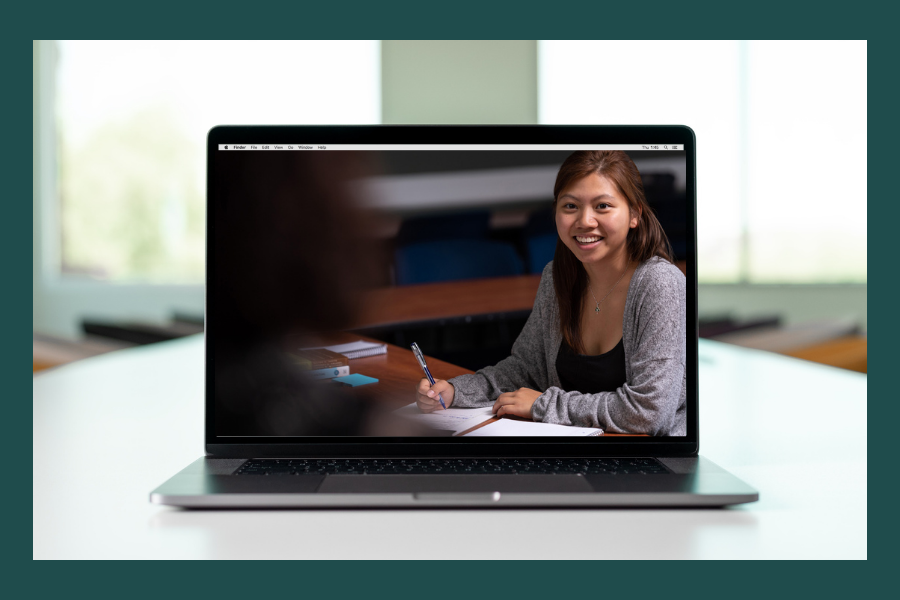
Professional Writing Students and Faculty Talk Online Learning
By Sarah Voorhees
Things are changing under CMU’s new COVID-19 guidelines. Students are knitting in class. Professors are teaching from the comfort (and chaos) of their own homes. Our Professional Writing students and faculty members are finding new ways to succeed in the Zoom checkerboard.
John Oddo, Associate Professor of English, says his Zoom classroom is much quieter than he’s used to. “I’ll very often ask questions and be met with silence,” he says. Oddo says Zoom cannot replicate a typical classroom experience because both he and his students rely on body language cues. “I can very quickly scan people’s faces in a face-to-face setting, and I can usually tell if they’re struggling,” he says, “I think it’s a challenge for students, too, that they can’t check in with each other.”
First-year MAPW student Kirsten Heuring agrees. “It’s a lot harder to see if people are in the same boat as you,” she says, “Do they have the same level of understanding or not understanding? Do they know what’s going on? You never really know, and it’s harder to find out.”
Although the online environment makes communication more difficult, our students and professors are taking advantage of digital resources in the classroom and spending their free time away from screens.
Heuring fights Zoom burnout by knitting during class, which keeps her from fidgeting or being distracted by push notifications on her phone. Her classmates, Sydney Mayer and Kelley Northam, have found their own healthy distractions. Mayer recently adopted a kitten, and Northam schedules time to work out, take walks, and read.
Chris Neuwirth, Professor of English and Director of the MAPW program, says she assigns more work in small groups because students can easily communicate with each other in breakout rooms. In his Style course, Oddo encourages students to share their computer screens with the class so they can get collaborative feedback on their work.
Northam says her professors dispelled her fears about online courses. “[They] genuinely urged us to reach out if we encountered any difficulties navigating virtual coursework during this difficult time,” she says, “As the semester has progressed, their willingness to listen and adapt to student concerns only becomes clearer in every class session.”
As students and faculty adjust to their virtual classrooms, they continue to discover new ways to communicate, collaborate, and innovate—all from home.